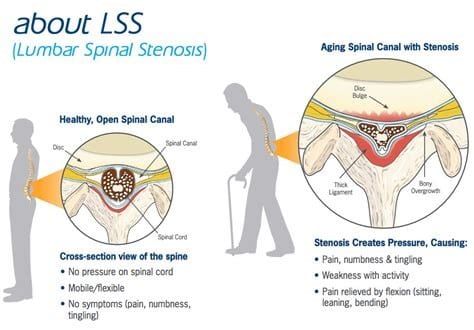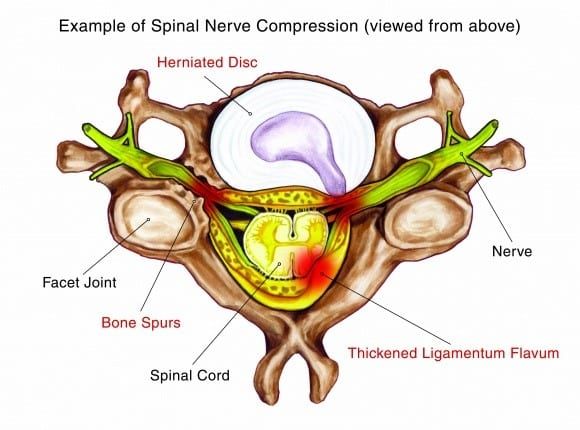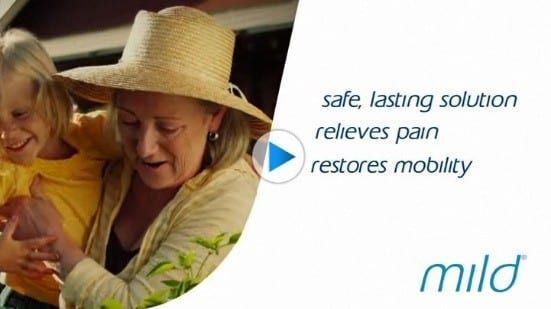Lumbar Spinal Stenosis (LSS)
What Is Lumbar Spinal Stenosis (LSS)?
Spinal stenosis refers to narrowing of the spinal canal. In most situations, symptomatic narrowing occurs in patients above the age of 60 as the result of degenerative changes of the spine. The spine and nerves travel through a cave-like canal that is surrounded by bone, joints, ligaments, and discs. Changes in these structures lead to narrowing. For example, when the joints and ligaments enlarge as a result of arthritis and calcification, they impinge upon the canal. Likewise, bulging intervertebral discs press on the spine further narrowing the canal. These processes commonly occur simultaneously.

What are the causes of Lumbar Spinal Stenosis?
Narrowing of the spinal canal occurs from years of degeneration. The process of degenerative disc disease forms the basis for this degenerative process. The “intervertebral disc” is positioned between the bones of the spine (vertebrae) serving as shock absorbers. Like the shocks in your car, the discs wear thin over time causing an interruption in the ability of the spine to effectively absorb the shock of everyday activities such as walking. As a result, the other supportive structures in the spine such as the joints and ligaments must overcompensate. Displacement of the body’s weight onto these joints and ligaments lead to enlargement of these structures, which in turn compresses the spinal canal.

What are the symptoms of Lumbar Spinal Stenosis?
The symptoms of lumbar spinal stenosis vary. The most common symptoms include pain in the back, buttock, and back of thighs that are relieved with sitting and aggravated by walking.
The symptoms depend on where the narrowing occurs. When the nerves exiting the spine are pinched, patients experience lumbar radiculopathy, which is widely known as sciatica. In this condition, pain is usually worse on one side causing radiating pain, numbness, and weakness into the buttock, legs, and calves.
Patients with spinal stenosis prefer to walk in a bent forward position because this position decompresses the canal. The “shopping cart sign” refers to the need to bend over a shopping cart while grocery shopping.
Severe stenosis can compress the spinal cord causing symptoms such as loss of bladder control, inability to walk, numbness in the groin and genitalia, and relentless pain.

What treatments are available for Lumbar Spinal Stenosis?
Treatment for lumbar spinal stenosis depends on the location of the pain and the severity of the symptoms. Treatments include medical management, physical therapy, minimally invasive procedures, surgery, and complimentary and alternative therapies. Advanced pain modalities such as spinal infusions pumps and spinal stimulator devices may also be appropriate.
New advances in minimally invasive decompression may be appropriate for some patients without the need for major surgery. This includes Minimally Invasive Lumbar Decompression (MILD procedure) and Vertiflex. The following links provide further information on these therapies.

